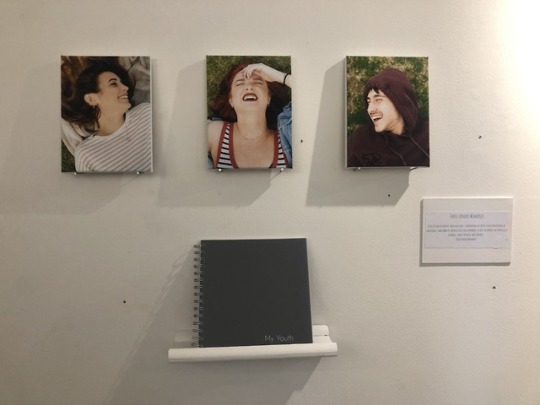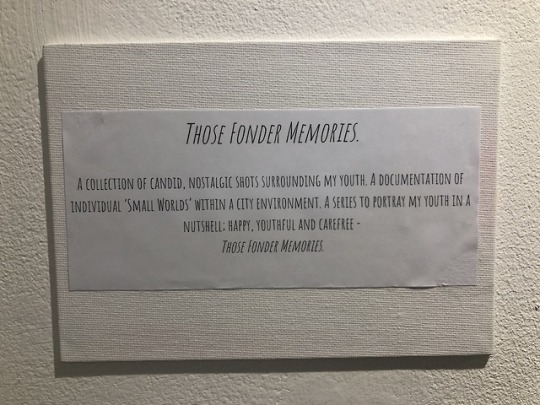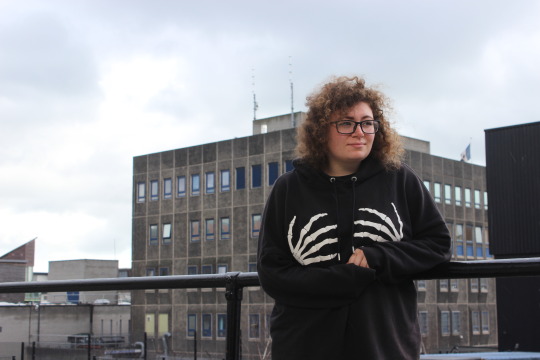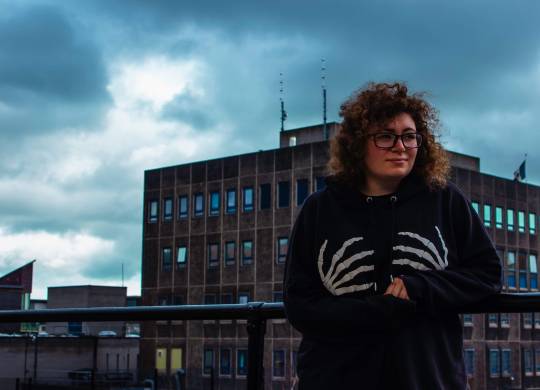#phot103
Text
Small world & city limits
Documenting a small world-
Josef Sudek-
Known for his black-and-white images of Prague, interiors, still lifes, and landscapes of forests. His most well known photographs were taken from the window of his studio. He said: “Everything around us, dead or alive, in the eyes of a crazy photographer mysteriously takes on many variations,”
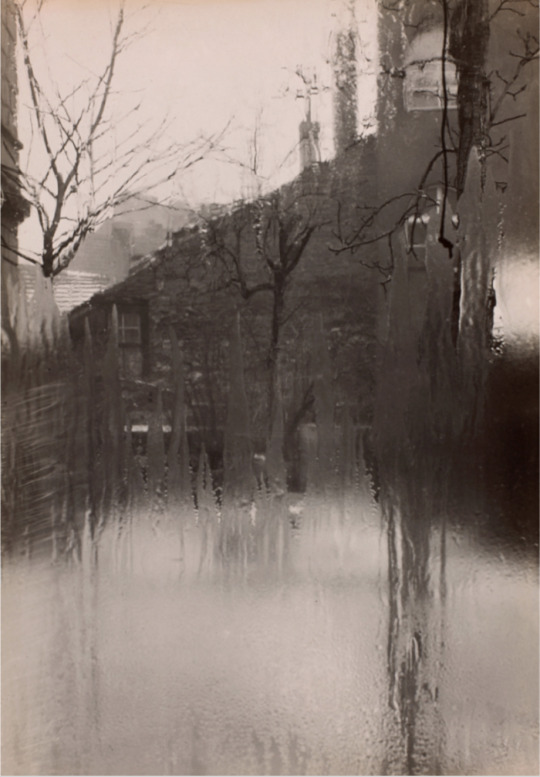
Josef Sudek- La Fenêtre de mon atelier [The window of my studio] c. 1940-1948
Eugène Atget-
Famous for his photographs of shop windows in Paris. By the end of his career, he had collected 8000 negatives which he had organised into categories. In the 1920s the Surrealists recognised in Atget a kindred spirit and reproduced a number of his photographs in their journals and reviews.

Arko Datto-
Arko Datta is an award-winning photojournalist from India. The image below shows how Diwali is celebrated by some of the most impoverished sections of society. “While the slums bear a look of disrepair, civic neglect and dereliction during the year, the little lights and decorations lend an air of magic to the atmosphere during Diwali.”

Arko Datto, Rail Diwali, Kolkata, 2015-16
Intimate spaces-
Dirk Braeckman-
The artist shows images of empty, interiors, architectural details, oceans, and nude figures. Braeckman creates unique prints using analogue processes and physically taxing experimental methods in the darkroom. His work has been widely exhibited across the world.
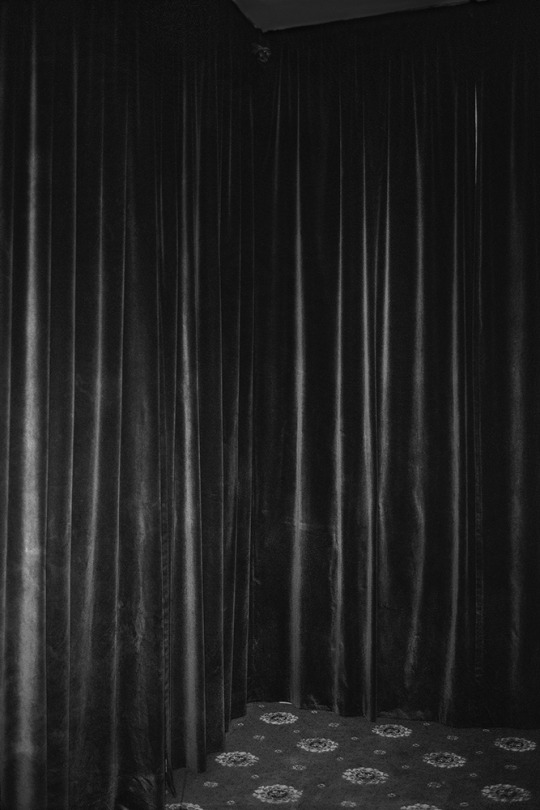
Dirk Braeckman V.B.-C.N.-11, 2011 Gelatine silver print mounted on aluminium
180 x 120 cm
Merry Alpern-
A contemporary American photographer known for her controversial surveillance photography. Her series Dirty Windows (1995) contains black and white images of men and women engaging in sex, doing drugs, and dressing or undressing at a low-rent brothel near Wall Street in Manhattan. She said: “Although the notion of the ‘female gaze’ has never really interested me, as a woman I could project some of my own experiences onto the pantomime in the window,”

Constructing a small world/space and place-
Thomas Demand-
Known for making photographs of three-dimensional models that look like real images of rooms and other spaces, often sites loaded with social and political meanings. He describes himself not as a photographer, but as a conceptual artist. He destroys his “life-size environments” after he has photographed them.
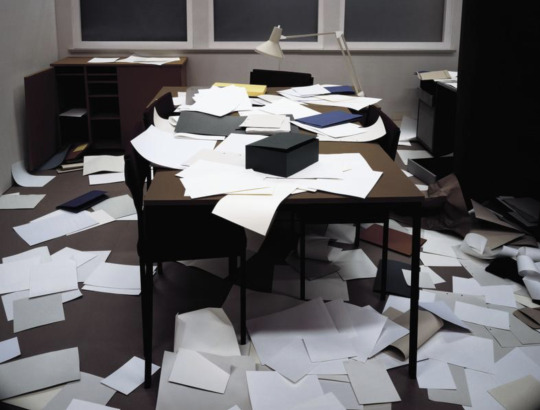
Office- 1995
2 notes
·
View notes
Text
PHOT103: FINAL IMAGES
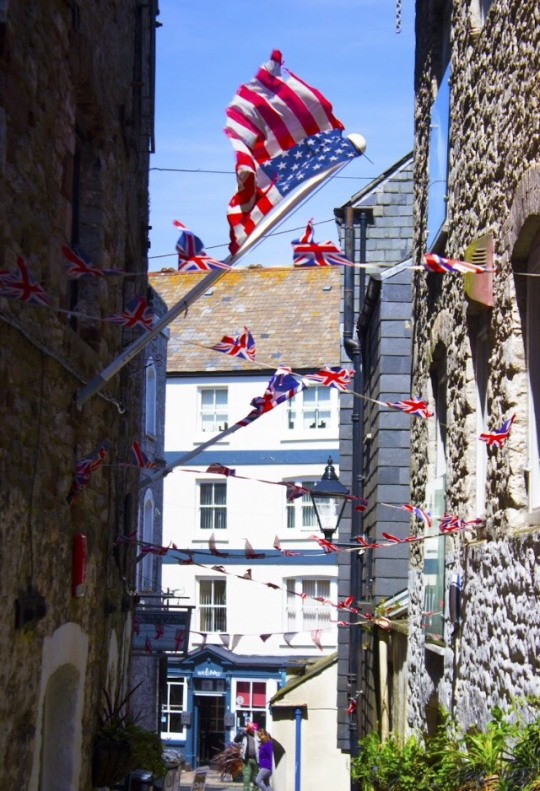

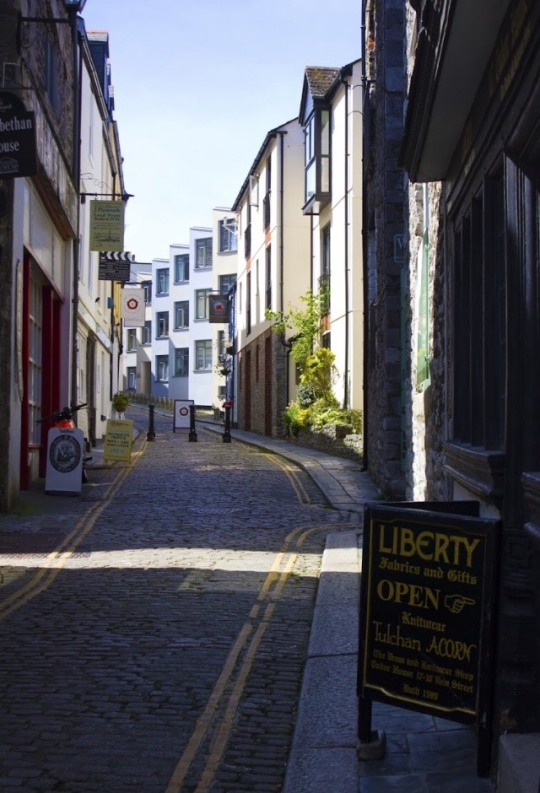
Here are ,my 3 images that I have chosen to represent my work on Small Worlds & City Limits, I feel the photographs are best described through a mixture of Old town Plymouth and the culture that was in infused with Martin Parrs work on British seasides and it’s Influence on defining brits way of living, I feel I have also done that by taking the work of another times realism and portraying it as what was before the modern overtaking of time.
0 notes
Photo
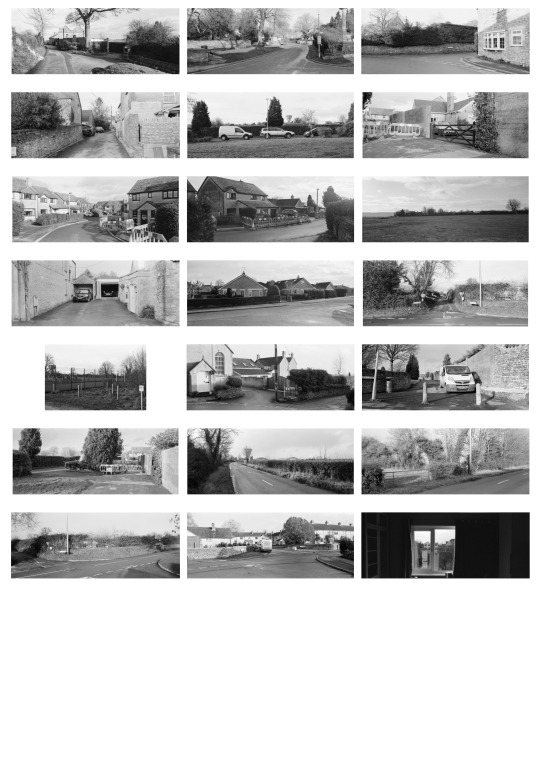
Epochal Territories Shoot (B-Roll) - 19/12/2020
During the main shooting for Epochal Territories, I shot some what I would call B-Roll photographs along side the main work. Mainly, this was because I found myself with a Hasselblad XPan II which was kindly given to me by one of the kind Tech Dems in the ERC, on one condition: It was broken. The XPan is a unique 35mm rangefinder because it doesn’t just shoot the normal 3:2, 36x24mm sized photograph we’re used to, but it can also shoot a 2:1, 65x24mm panoramic frame. This is great, when the way to access that works. The XPan is paired with the 45mm F4 and in this shoot, I used Ilford HP5+ which I developed in stock ID-11 for 7.5 minutes and scanned with my Canoscan 9000F MKii at 2400DPi. The film was metered and developed at 400 asa, with the lens stopped down to F8-F11 and kept in aperture priority for convenience whilst I made sure the format dial didn’t move...
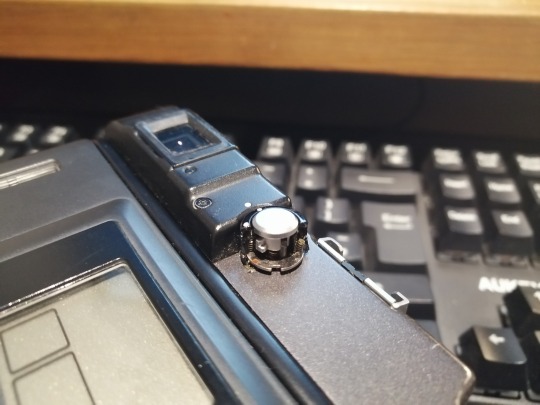
Above is the dial to switch it from normal to panoramic. I knew about this, as the Tech Dem told me that it either didn’t work or was extremely fickle. As you can see, it is missing a great deal of it’s casing and only worked if it was in a specific position, and if not, a flashing P would appear on the frame display instead of a solid P. But, despite it being broken, I managed to get it to work for the most part by turning it whilst wearing gloves...because it was cold. The XPan was with me for a couple of laps around Colerne on a bitterly cold December afternoon.
*The above contact sheet is in reverse order because how the XPan is loaded, as it winds out the entire roll first before shooting, just so when the roll is finished, it is already in the canister.*
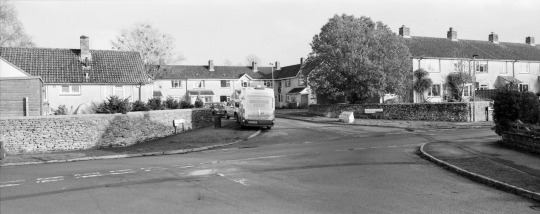
The letterbox style of the XPan’s panoramic mode is incredibly cinematic, and works rather well with - obviously - straight horizontal lines. What I wanted from this ‘shoot’ was something different from the normal photographs taken on the Mamiya 7ii. During the time, I wasn’t really sure why I was shooting Ilford HP5+ through an XPan when all of this project was shot with the aforementioned. But, now I realise it can be used as B-Roll for the up-and-coming book for Epochal Territories, which is in the very early stages of development. I envisage these or similar images being used as background for text or other artworks. I am thinking in terms of using these images with similar text to what I have been writing on my shoots, but a longer and potentially less coherent sporadic amount of words and thoughts, almost capturing the catatonic nature of the zeitgeist.

The amount of space you can fill in the frame is amazing. What you are getting - technically - is a medium format 35mm camera, as it is larger than full frame. With this, you get the benefit of the 135 format’s portability but the photograph real estate of 120, all packaged in a lovely metallic camera manufactured by Fujifilm, made under license by Hasselblad.
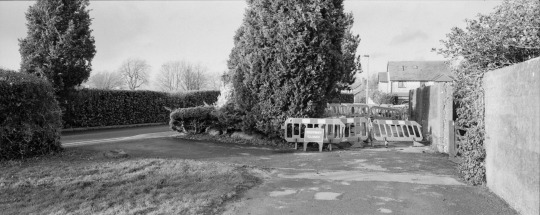
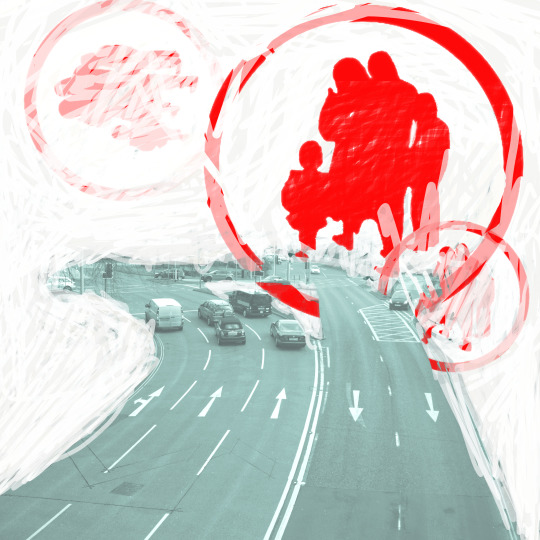
I feel that these images would suit being used as ephemera within the book, mixed together with text or altered themselves just like my previous work for PHOT103 (above). I would like to return to this work, with the possibility that it could make an appearance within this body of work. I found the way of erasing the clutter instead of deleting creates panic and a sense of unease, which is what my work is about. There could be a way where I utilised these photographs (or take others) and combine that style as well as text. Perhaps the text doesn’t need to be discernible?

Even the standard 3:2 photographs from the XPan are great. This was actually an accident as the P wasn’t working so I had to take it normally, but I think I prefer it that was due to the mass of vertical lines.


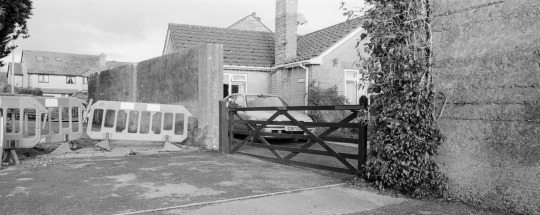
I mostly enjoyed this part of Colerne by The Rec because of these barricades, closing off parts of the pavement and houses. It felt odd walking around and having to conform to these barricades because work was happening despite nobody actually being there.

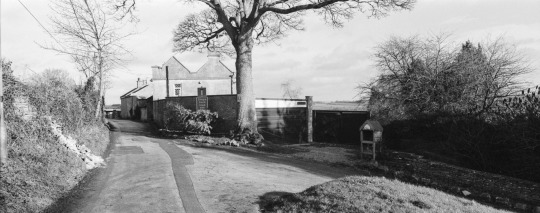
Despite these coming from a different camera setup, I still get the same feelings of unease and malaise that I get with the images from the M7ii. Perhaps it is the desolate nature of the village or the depersonalised landscapes. I also feel that the panoramic nature of the photographs lends itself to this feeling because it is not a natural way for us to ingest an image. We are used to having a certain set of aspect ratios, with this one relating more to cinema than anything. They could be stills from foley video recordings, with just the ambient noise of wind, distant cars or conversations coming from behind hedgerows.
A coda. I plan on working with the images and incorporating them into the book in one way or another. I shall try to create various artworks with them and see if they work together, whilst keeping to the monochromatic theme of the project. I plan on the book having no colour either, with monochromatic covers and text, furthering the feeling of bleakness and seeing the world in a different light. This will need to be worked upon in the coming weeks as well as planning the pace and style of the book. I still have a lot of locations I would like to visit, which certainly depends on how the lockdown works out in time.
1 note
·
View note
Text
PHOT103 - Scanography
Photography doesn’t have to be executed with a camera..shocking I know. There are some processes that don’t need a camera to record and image. Cyanotypes just record and image with a chemical reaction with the sun, and a scanner works in a similar principle to a camera. A sensor ‘scans’ an object by running across said object while using a lot of light and bouncing the light across some mirrors. In principle, it’s just a CCD sensor that moves. Pretty simple stuff.
Scanners are incredibly useful. You can make copies of important documents, digitise one’s film archive and create images. The two later options are far more impressive than document scanning. You can actually scan objects, not just flat pieces of paper with the use of a scanning box. It’s just a black box that goes over the scanner which allows you to scan larger objects as well as block off the light.
At PCA, the flatbeds we use are the Epson V750 Pro. It’s an incredibly versitile scanner capable of a lot of tasks. Mainly I use it for film scanning as it’s reliable and offers some fantastic results. But at home, I use a HP 7520 for documents and scanography. Things you have to consider with scanography is the protection of the scanning glass and what you’re scanning. When scanning paper, you don’t have to protect the glass, but you do when it comes to larger objects. For this, you can use a piece of acetate just in case there is a chance of the scanner glass being scratched or cracked.
Something else to consider is the DPI of what you’re scanning. A standard printer will output at 300DPI (that’s dots per inch for the layman). Anything larger or smaller than that will have to be changed if one is willing to print at a later date.

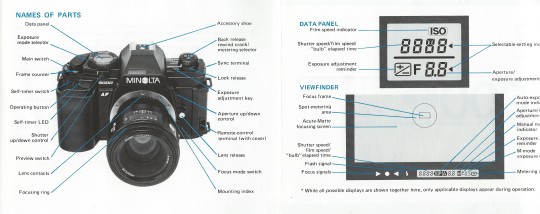
Here are just some examples of scanography used for ‘Exploded Image’. Note the first image, I had misplaced my scanner box so I had to settle with putting the lid down when scanning. You can see the parts that aren’t touching the scanner glass aren’t in focus, creating this warped distortion, almost scanner bokeh. Of course, this can be used to ones advantage, and I actually like it like that.
The lower scan is of a Minolta 9000 manual. As the booklet scan be laid flat, there is no warped corner weirdness. Both were scanned at 600dpi. This means that I can print it double the size of a 300dpi scan if I wanted due to the 2x multiplication. If I was to scan at 150dpi, this would be half the size of a 300dpi print.
Scanography is a major part of Exploded Image. Finding things to scan in books and magazines allows one to almost import work that can’t be found elsewhere into their work, creating a more unique flair to the work. But of course, the world is your oyster when it comes to scanning things. You can even experiment with moving the object when scanning to create a distorted and distended scan, similar to WK Interact’s images. There are so many ways that scanning can be utilised into ones work, it just takes some experimenting with getting the right results, but this isn’t any different to any other kind of photographic technique.
0 notes
Photo
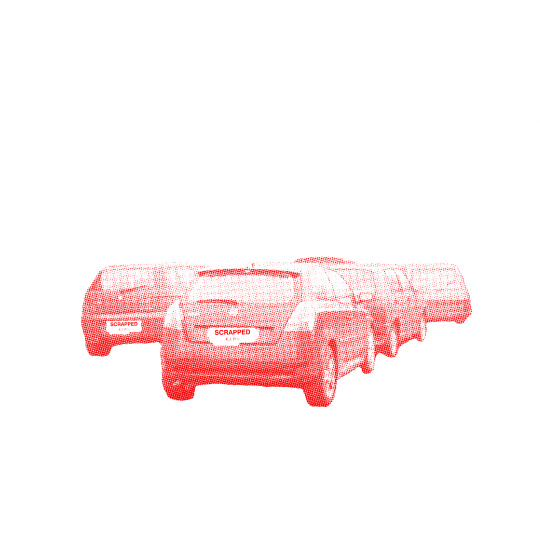
PHOT301 - Mileage May Vary - An Evaluation
The first portion of this project has gone already? Those people weren’t lying when they said it’ll go fast once third year comes around. And this evaluation marks the end of PHOT301, which is the early stages of the FMP, featuring all of the research and planning of ones project. Although this is only the beginning for what I finally titled ‘Mileage May Vary’. This project is the culmination of a majority of previous works all the way back to my access course, which started in 2016. The seeds of MMV were planted all throughout my tenure at university, with elements from PHOT103, 104 and 201.
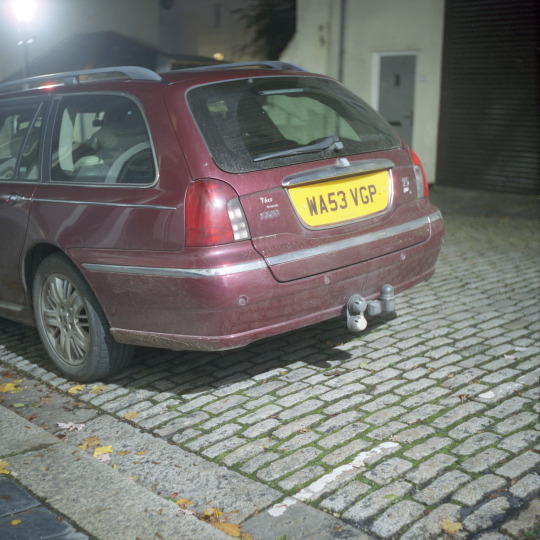
Rover 75 - Mamiya 6 IV - Cinestill 800T
PHOT202 is where my work took a turnaround. That whole project was a massive mistake: start to finish. It had the right intentions from the get go, and was meant to let off where Alienated Spaces left off. However, I felt alienated about a project about alienation as I was trying to convey something that had dwindled over time. This lead to me leaving anything contextual behind and focusing purely on taking images for the sake of images. It was during this time of making images without any substance, I thought of a project that documented cars that managed to escape the 2009 Vehicle Scrappage Scheme. Annoyingly, this thought came to me when I was a good way through PHOT202 and wasn’t able to go through with changing an entire project, but I wanted to keep hold of it for a summer project, which then turned into my third year work.
The summer time isn’t a conducive time of year for my to be working, as I find the harsh sun and long days uninspiring and the weather is always too hot. That may come across as whiny, but it is just how I feel about the summer. I managed to get one measly shoot in before university started again in September, yet it was interesting to see where my head was at, in terms of composition and creating images. This managed to lead me into a practice that as mostly self lead, but also included an amount of research to back up what I am doing. Although, I piqued up my reading on hauntology, and came to the realisation that it has been omnipresent without my knowledge since the very early days of the degree. Hauntology is something that took me a long time to get my head around, as the first interaction of it was convoluted. However, with much more reading on the internet, and Mark Fisher’s writing made it a lot easier to grasp the spectral haunting of our society. Fisher has always been an accessible writer to me, and makes somewhat complex theories by making them link into something contemporary, which I find a lot easier to digest. I found Derrida’s original text about hauntology was difficult to take in and only made me hate it. Fisher does a good job in making some palatable without dumbing it down.
The other aspect that informed my practice was governmental data about the VSS. Thankfully in 2014, the government released the numbers from the scheme, which detailed how many vehicles were scrapped between 2009/2010. However, there are some detailed discrepancies with the data as it was all taken from different sources, and those sources were each and every dealership that received candidates for scrapping. Despite this, it was interesting to see the ‘reality’ of the numbers regarding the vehicle scrapping. Perhaps in the final stages of MMV, I should look at the highest number of scrapped cars and document them.
Shooting the project was potentially the easiest experience as of yet. The process of finding subjects was mainly walking the streets of towns and cities. There is no way to gauge what one is going to find as its impossible to know what cars are on what street, with the only way to know is to find out. Finding the right subject was a form of trial and error, with a lot of the cars mainly on the streets now won’t be affected by the VSS as they didn’t exist. Some models did however, but the date on the registration plate would place it after the scheme. The technical aspect was no problem either, as I am now fully proficient and reliant on shooting film for personal projects.
There also wasn’t many issues regarding shooting apart from the exposure issues, which was down to me, and the same roll being slightly damaged by the processing provider. These can be overcome by making sure the equipment is in place, and changing where I process my film for colour. Whilst that may cost slightly more and take longer, its the peace of mind knowing that it probably won’t be damaged by a rushed process.
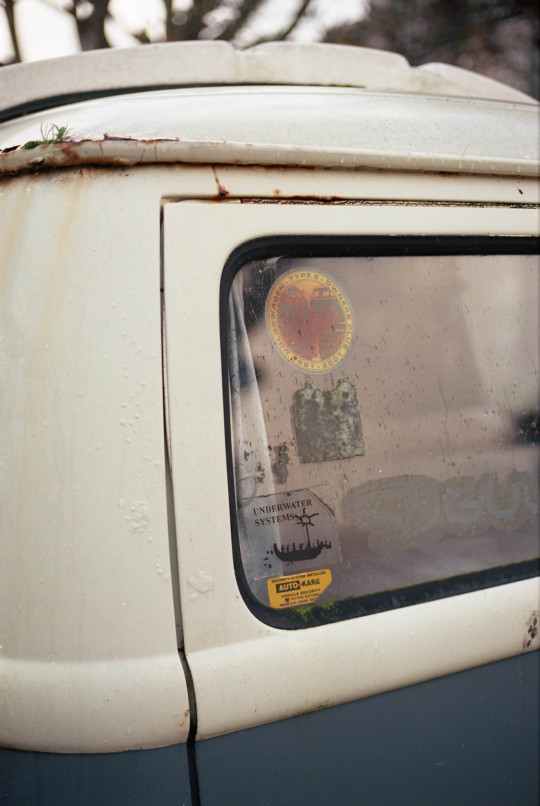
Volkswagen Type 2 - Canon EOS-1 - 50mm F1.8 STM - Kodak Ektar 100
Taking the photos was a breeze, as I knew what I was looking for and taking. Although, what is included in the photographs has varied over the course of the project. It started with composing the majority of the vehicle in frame, but after talking to Jack Latham, it seemed like a good idea to focus more on the details of the car. I was including things like scrapes and dents, as this shows that it has been used and knocked over the years. But, I was featuring these points whilst the vehicle was mainly in view. I have mixed these together instead of limiting myself to one kind of composition.
One thing I would improve upon is shooting more medium format images for the higher fidelity of negative. I only shot one roll of medium format during these stages of the project, and this was the roll of which I had a shutter speed issue and the roll of soiled by MyPhoto. One thing I would like to experiment with the Cinestill CS41 kit, which allows one to develop colour film at home, with the same process as B&W. This makes it a lot easier to develop colour, as it is a finicky process with tight tolerances with temperature. I also decided to disregard shooting black and white, as I wanted to document the pragmatism and realism of the vehicles.

The photo book is something that I feel my work lends itself to, as it can contain a narrative bundled together in a handheld package. At this stage, I didn’t want to produce a self published book as it is still the early stages of MMV. However, I did want to make something that contained these elements, but had a level of experimentation to it. This is where the ‘zine’ comes into fruition; although I am not sure what to call it, as its a mix of a photo book and work in progress documentation of what I want to create further down the line. I made the online/PDF version on Canva, as it is a free and powerful tool to create graphics and documents. Once I knew what images I wanted and how to display them, it was rather easy to create. The cover was the most challenging aspect to this, as I knew I didn’t want to just have a photograph on the cover, and I wanted to resurrect my graphic design work. For this, I utilised one of my images and editing it with GIMP, a free alternative to Photoshop. The cover contains semiotics to the entire project: cars are the sole image on the cover which reflects on the project’s subject, which is coloured red to signal the Labour government’s scheme and the bitmap effect was to give the illusion of newspaper articles about the scheme/news. This is a style that I would like to go back to and hopefully keep using for the next portion of the FMP.
Being informed and influenced is something that I written about being somewhat difficult for me. Whilst I do digest photography on a regular basis, only some of that actually makes an impression. I can appreciate a nice photograph, but it rarely gets my creative juices flowing. Although once in a blue moon I will stumble across a practitioner that just gets me. Once of those is the little known Vlad Tretiak; a Russian based photographer with a partial social media following. His work manages to intrigue me in a technical aspect as he shoots medium format at night time, as well as the subject themselves. I have always had a fascinating with anything Russian and Soviet related, and this manages to meld in my love for cars. Chris Dorley-Brown was tuned into me by Jack Latham, and Dorley-Brown’s work focused on the portraits of motorists stuck in traffic during the summer of 1987 in East London. I rarely enjoy photographs containing people, but it made me think that my work as portraits of the cars themselves. I also was inspired by Franck Bohbot, who I looked at during PHOT104′s Economy project. These practitioners, as well as the contextual research of hauntology has spearheaded me into a well informed project, which after PHOT202 was much needed.
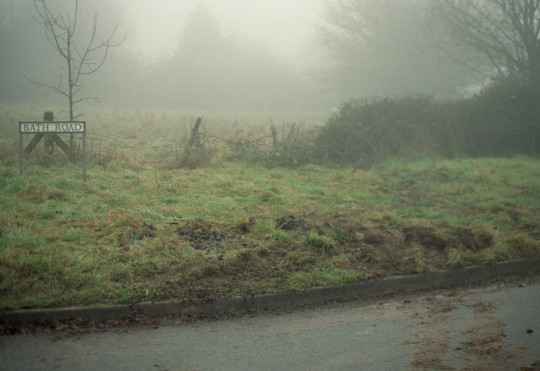
Citroen Berlingo Aftermath - Canon EOS-1 - 50mm F1.8 STM - Kodak Colour Plus 200
Where does this lead me for the final stage of the FMP? With all of the now previous work, I feel as if I have a good project on my hands and that I can take it far. It feels as if I am finally undertaking a project that I am actually enjoying to shoot to produce, in addition to not feeling like it’s died as soon as it has been handed in like previous projects. The premise of this project was on my mind for a while and I am happy that I can finally undertake it, and take it into the future to wherever it will take me. What I have produced is something that I am proud to have my name to, and it has garnered some good feedback and constructive criticisms. The work flow shall continue after PHOT301, and any film started before, and hasn’t been finished before the deadline shall be used for the second portion of the FMP. With the continuing stages of MMV, I plan to still use the compositions of full car and close up detailed shots, but I would like to incorporate the numbers/statistics of the cars that were scrapped - possibly even photographing a selection of the most scrapped vehicles from the government spreadsheet. The prints will also progress, as I plan to print at least A0 for Free Range and accompany them with a layflat ‘coffee table’ style book, detailing an edited down selection of all vehicles photographed during the project. Technically, I would like to utilise more medium format and find a more uniform visual aesthetic in regards to tones. This would mean possibly shooting one type of film and edit them accordingly. Although I would like to use some expired film to add to the hauntology of the photograph, as well as using a film stock that co-exists with potential vehicles in frame. If multiple stocks are used, I shall to the best of my ability edit them so they are visually similar with little difference between them.
I feel that this has been the most enjoyable project to date, as it has been totally up to me with what I do, instead of interpreting a brief and making my work fit it some how. With this, I have been totally free to create what I want to create in a professional and informed manner. I am looking forward to seeing what the future brings for this project.
0 notes
Text
PDP - Metro Student Awards
While looking at the competition section of the PDP toolkit, I stumbled upon the Metro Student Awards 2018 competition. The theme was ‘Threshold’, and it was based around a single that encompasses ones work in full.

I found this interesting. While I could submit work for an award, I could also look at what kind of work I create as a whole. It got me thinking; what do I create?

I chose one of my images from PHOT102. The overall theme of my work has been something I have been thinking about over this time in university. It suddenly hit me when I was doing some work for PHOT103; while a lot of work has been linked to an urban setting, I also realised that a similar ethos has been a current theme across these projects. I realised that my work was based around the urban scene, with a hidden subtext of the alienation, social isolation and estrangement one feels in the urban space. It makes me feel somewhat indifferent when I am in such a space, I feel at home but at the same time it’s so far away from our origins. I also feel this alienation in social settings, I have never really felt as if I have fitted in anywhere, I have always felt that there is something keeping me from really connecting with people of a similar age. I also have noticed that I have totally eradicated the humanised element of photography. When I started to take photography a bit more seriously, I was really into street photography and documenting the human lives on the street. Over the years, I have moved away from this. Although I work in the urban spaces, I avoid any people in my work at all costs. This is due to the urban space being the sole focus, as well as feeling somewhat out of touch with the people on the street; hence the social isolation and estrangement as a hidden subtext.
0 notes
Text
Exhibition layout
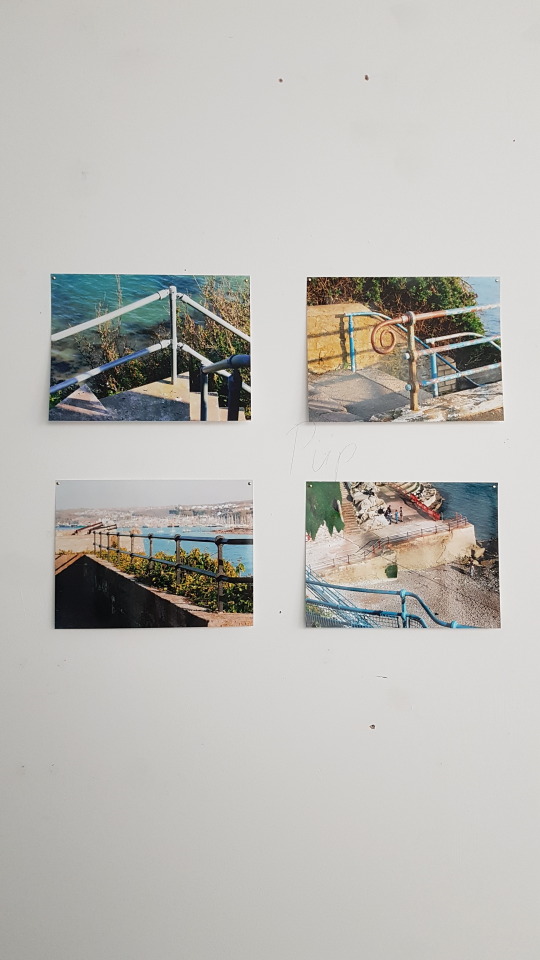
This is how I played my images out for the presentation. I wanted to keep it simple as the question around the project was so complex.
0 notes
Text
Final images
These are the final images that I chose for this project:
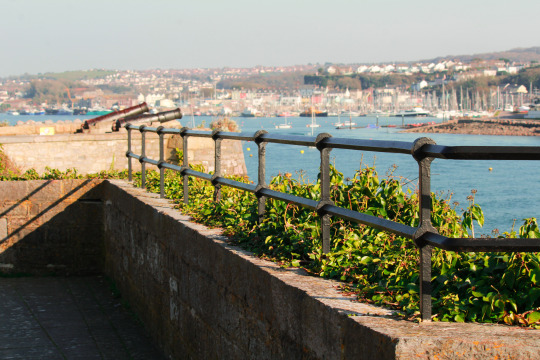
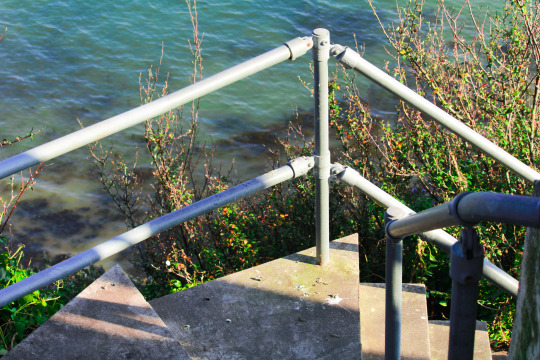

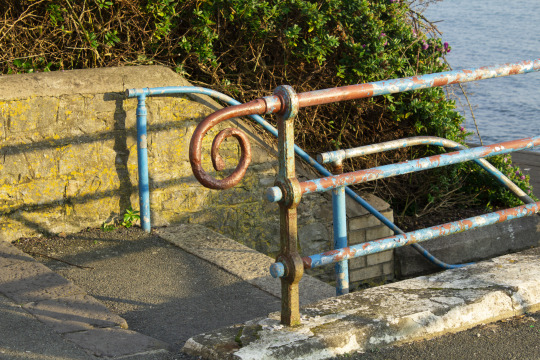
I think that they represent my theme ‘barriers in the city’ well. They show the divide between man made and natural landscapes that I wanted to show and they make us question why we put up so many barriers in our world.
0 notes
Text
Shoot 2
When I did this shoot, I had a much clearer picture of how I wanted to portray my idea. The research I did helped me as it made my idea clearer about how I wanted to show my idea. The last shoot was quite successful so I wanted to replicate a few aspects from it into this shoot.
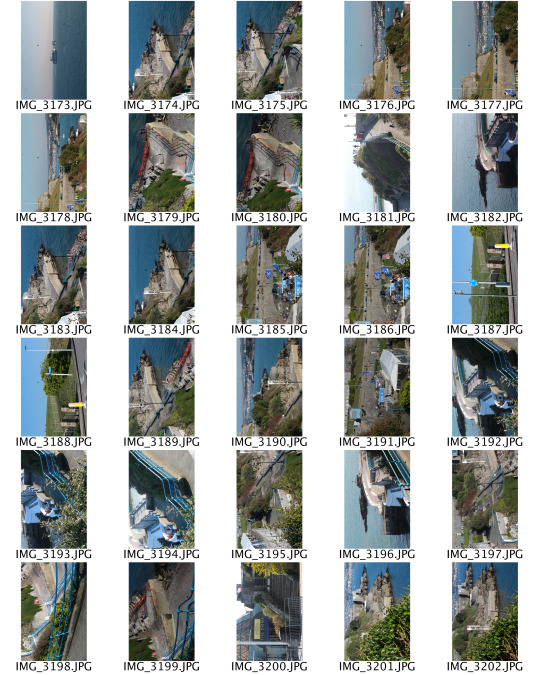
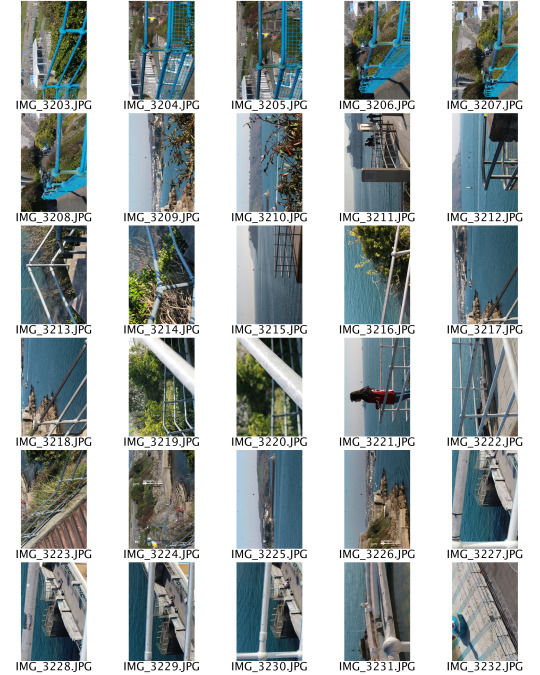

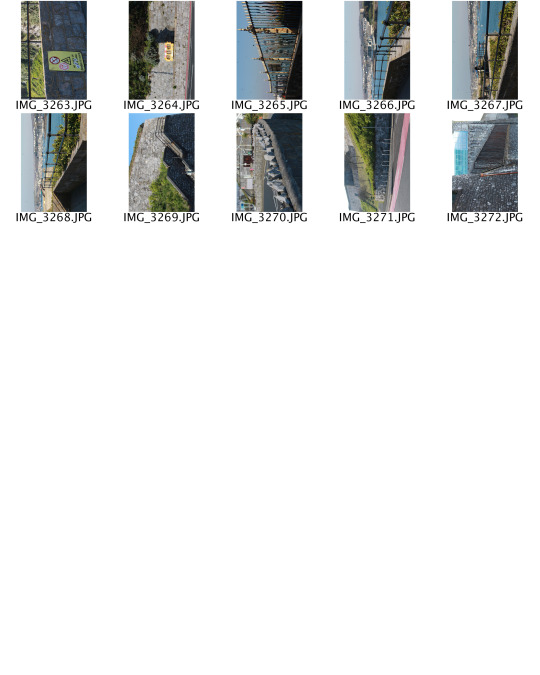
The pictures that I took represent my idea well and relate to the theme that I chose for this project.
0 notes
Text
Emilio Cresciani
‘Barriers’ - 2008
Photographed textures of erosion and corrosion of barrier remnants that represent the theme of being lost. He photographed them against the blue Australian sky.
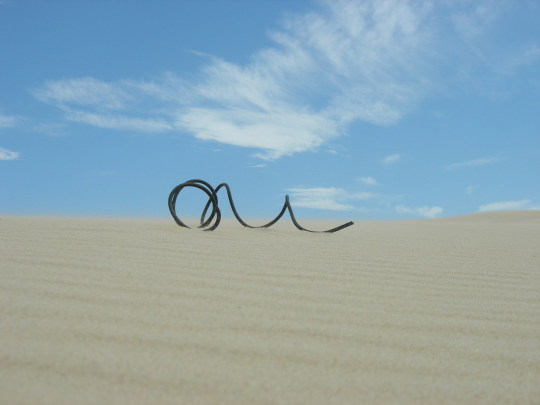
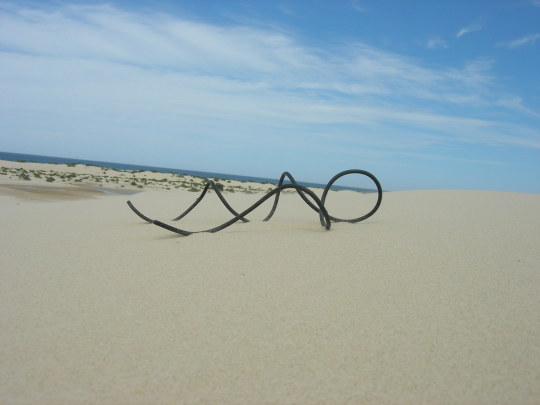
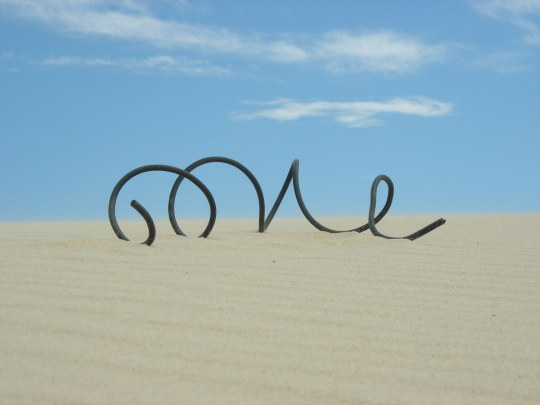
0 notes
Text
Richard Wainwright
‘Borders and barriers’
An ongoing project that looks at how separation walls in conflicts contribute to being a physical and psychological barrier to a ‘positive peace’.
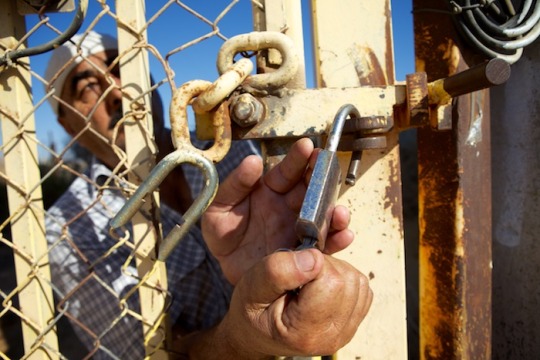
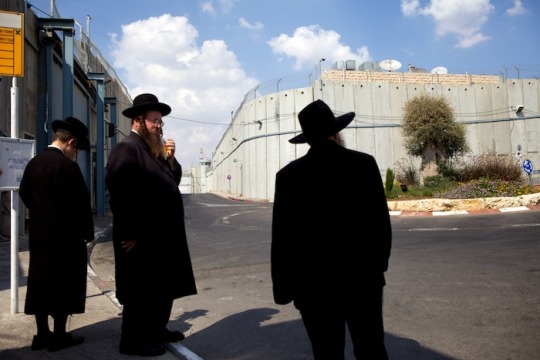
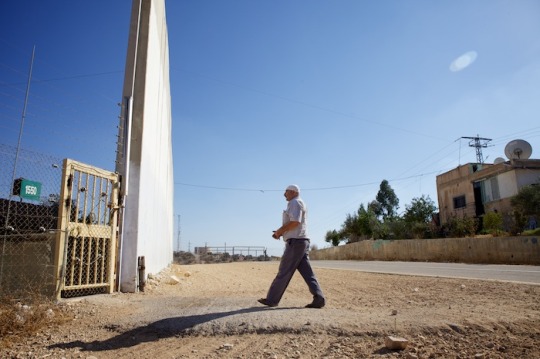
0 notes
Text
Aidan Daly
I also looked at this image by Aidan Daly which is similar to the kind of images I want to showcase for this project. I like how you can see through the barrier at what's on the other side. It makes you think about why that barrier was put there and what they wanted to stop people from doing.
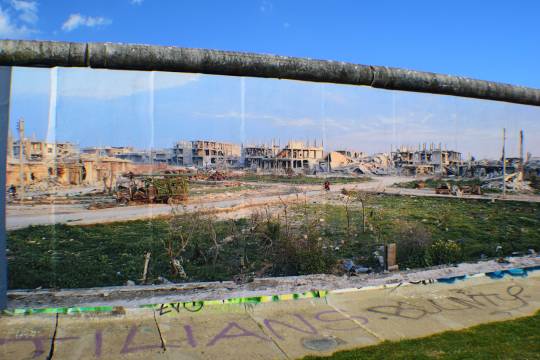
“A political comment on a once militarized wall.”
0 notes
Text
Gerry Masterson
My photographs from my first shoot were inspired by this image I found by Gerry Masterson:
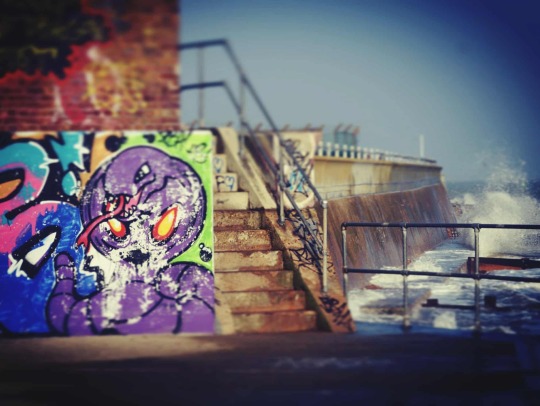
I think that this image captures my idea for the project well as it is showing a divide between natural and man made.
0 notes
Text
Shoot 1
For this shoot, I wanted to explore the theme I chose for this project: ‘Barriers in the city’ I photographed different fences that show a divide between areas.
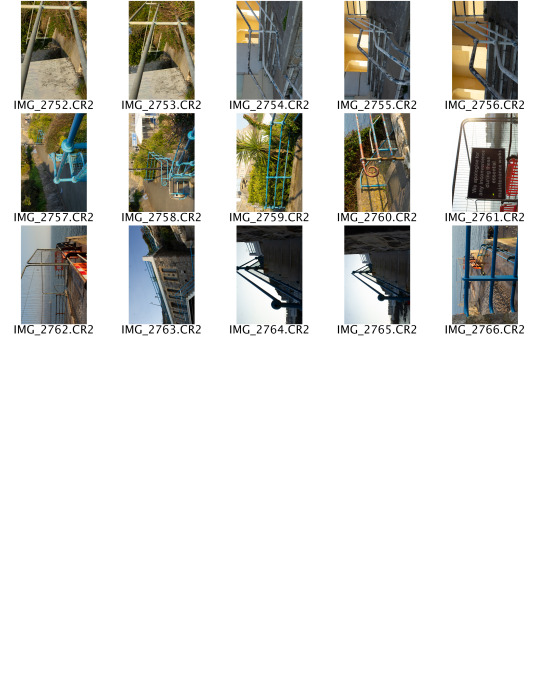
I think for a first shoot this was successful. I now know where and how I want to continue this project and it has given me more inspiration for photographs.
0 notes
